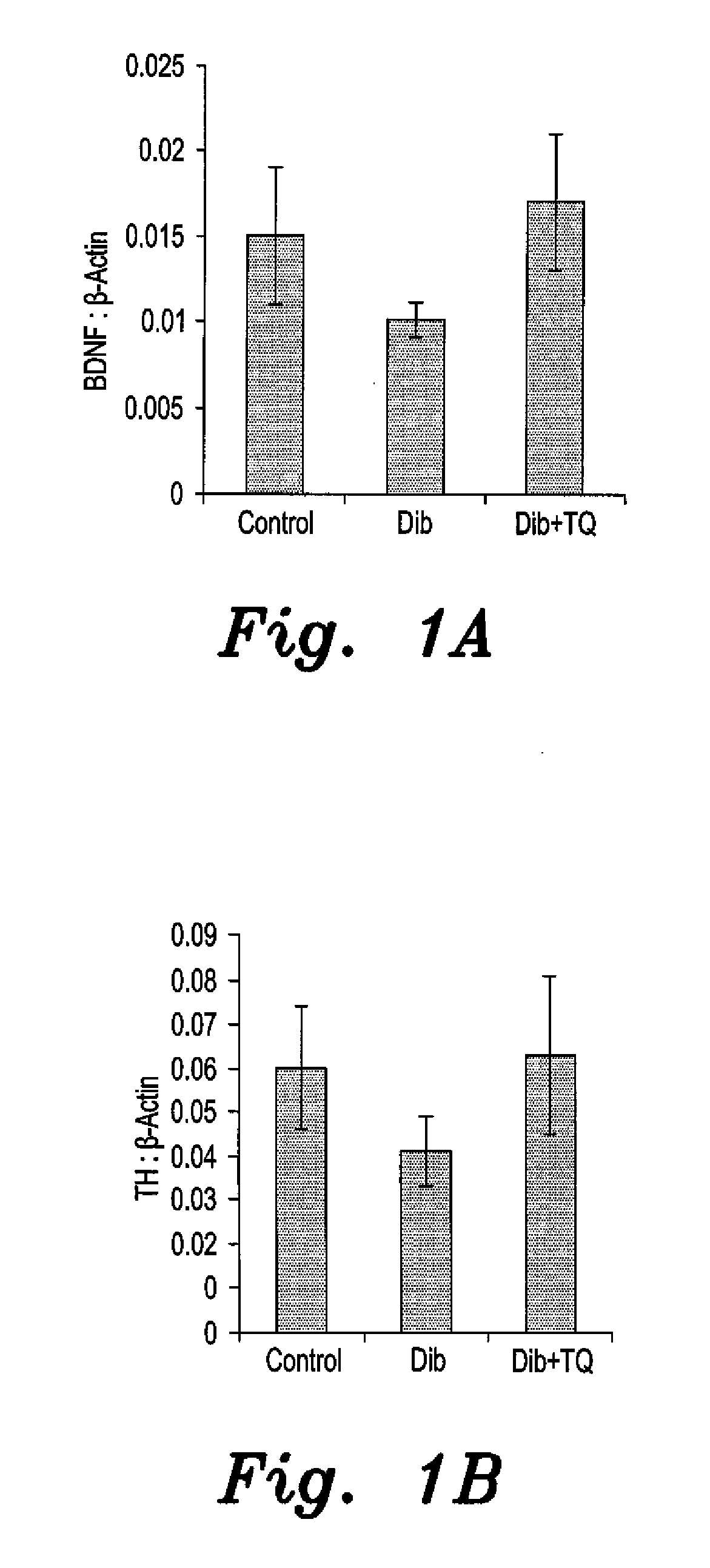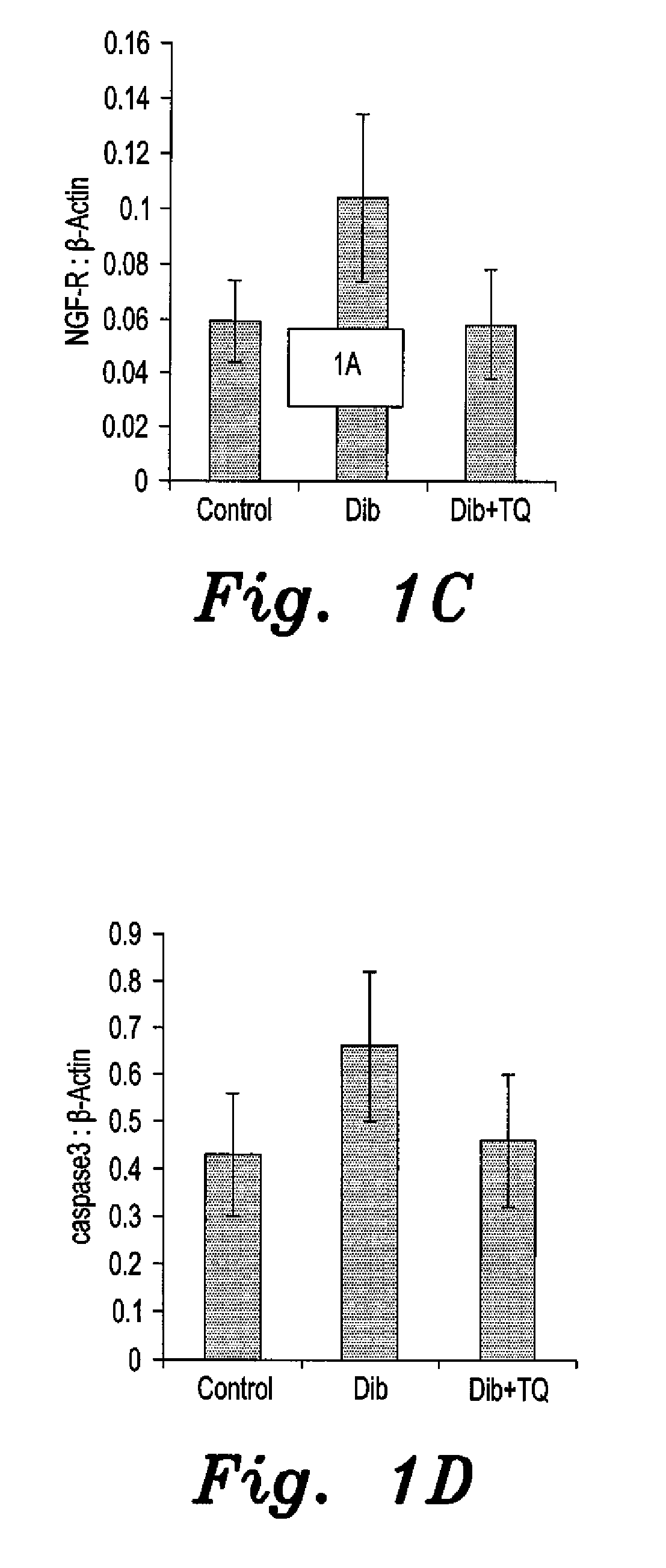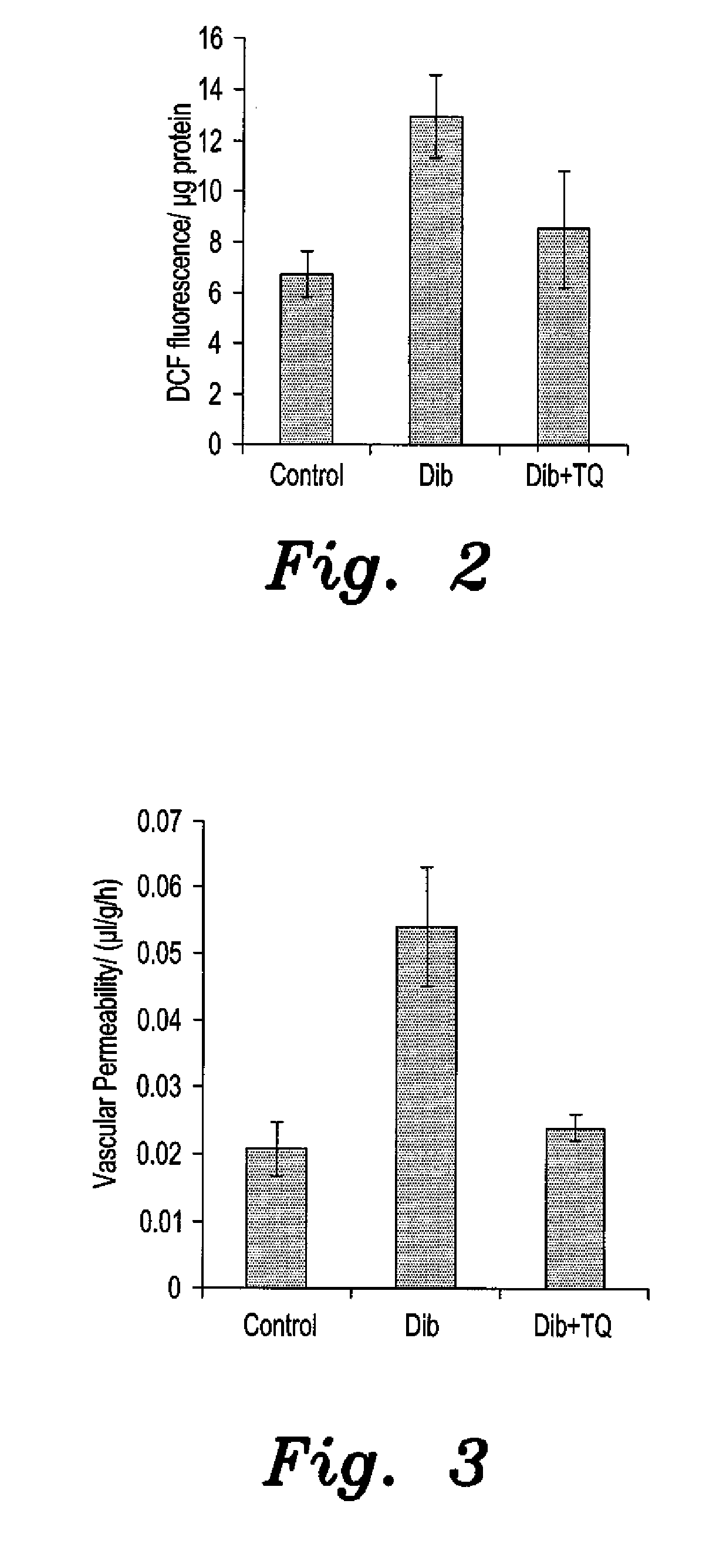Method for treating a neurovascular complication of diabetes mellitus
a neurovascular and diabetes mellitus technology, applied in the field of neurovascular complications, can solve the problems of affecting the lives of millions of people around the world, affecting the function of various organs, and affecting the quality of life of people, and achieve the effect of preventing and/or treating neurovascular complications
- Summary
- Abstract
- Description
- Claims
- Application Information
AI Technical Summary
Benefits of technology
Problems solved by technology
Method used
Image
Examples
example 1
[0036]Following animal euthanasia, rats' retinas were collected and homogenized in a Western lysis buffer (30 mM Tris-HCl, pH 7.4, 250 mM Na3VO4, 5 mM EDTA, 250 mM sucrose, 1% Triton X-100 with Protease inhibitor). The lysate was centrifuged at 14,000×g for 10 min at 4° C. and the supernatant was collected. Protein content was assayed by DC protein assay. The tissue lysates containing 40-50 μg protein were separated on 10-15% SDS-polyacrylamide gels and were transferred onto nitrocellulose membranes. The blots were blocked with 5% nonfat milk in TBS-T buffer (20 mM Tris-HCl, pH 7.6, 136 mM NaCl, and 0.1% Tween-20).
[0037]For detection of brain derived neurotrophic factor (BDNF), tyrosine hydroxylase (TH), nerve growth factor receptor (NGFR), and cleaved caspase-3, the membrane was incubated overnight at 4° C. with mouse monoclonal anti-BDNF (1:500) mouse monoclonal anti-tyrosine hydroxylase (1:300), Mouse monoclonal anti-Human NGF R (1:500) and rabbit monoclonal ant...
example 2
Reactive Oxygen Species (ROS) Measurements
[0038]Reactive Oxygen Species (ROS) generation was measured in retinal tissue homogenates using a 2′,7′-dichlorofluorescein-diacetate (DCHFDA) as is known in the art. DCFHDA, a nonfluorescent dye, was cleaved by esterase activity to yield DCFH (2′,7′-dichlorofluorescein), which was subsequently oxidized by a variety of ROS to form diehlorofluorescein (DCF), which is fluorescent. Retinas were homogenized in PBS in the presence of protease inhibitor using a glass homogenizer. Samples containing 20 m proteins diluted in PBS were incubated with 5 μM DCFHDA (Invitrogen, CA, USA) in the dark for 15 min. Fluorescence was measured using a SpectraMax Gemini-XPS every 15 min for 1 hour with excitation and emission wavelengths of 488 nm and 525 nm, respectively.
example 3
Measurement of Blood Retinal Barrier (BRB) Breakdown
[0039]Rat retinas were analyzed for Blood Retinal Barrier (BRB) breakdown after 3 weeks of thymoquinone dosing using fluorescein isothiocyanate (FITC)-conjugated dextran as previously described in the prior art. Briefly, rats were deeply anesthetized and then FITC-conjugated dextran (40 kDa) was injected intravenously (50 mg / kg body weight). After 10 to 15 min, a blood sample was collected and each rat was then perfused with Phosphate Buffer Saline (PBS). After perfusion, the retinas were carefully removed, weighed and homogenized to extract the FITC conjugated dextran. Fluorescence was measured using a Spectra Max Gemini-XPS with excitation and emission wavelengths of 485 nm and 538 nm, respectively, with PBS as a blank. Blood retinal barrier breakdown was calculated using the following equation (1) with the results being expressed in μL g−1 hr−1.
RetinalFITC-dextran(μg) / retinalweight(g)PlasmaFITC-dextranconcentration(μG / μL)*(circu...
PUM
| Property | Measurement | Unit |
|---|---|---|
| Dimensionless property | aaaaa | aaaaa |
| Dimensionless property | aaaaa | aaaaa |
| Time | aaaaa | aaaaa |
Abstract
Description
Claims
Application Information
 Login to View More
Login to View More - R&D
- Intellectual Property
- Life Sciences
- Materials
- Tech Scout
- Unparalleled Data Quality
- Higher Quality Content
- 60% Fewer Hallucinations
Browse by: Latest US Patents, China's latest patents, Technical Efficacy Thesaurus, Application Domain, Technology Topic, Popular Technical Reports.
© 2025 PatSnap. All rights reserved.Legal|Privacy policy|Modern Slavery Act Transparency Statement|Sitemap|About US| Contact US: help@patsnap.com



